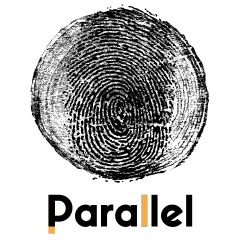Embracing Nature’s Genius: A Dive into Biomimicry
In the intricate tapestry of our natural world, evolution has sculpted marvels of design and efficiency over millions of years. As humans strive for innovation, there exists a profound source of inspiration — Biomimicry. This discipline, often referred to as “nature-inspired design,” draws upon the brilliance of nature to solve human challenges and create sustainable solutions.
Unveiling the Essence of Biomimicry
Biomimicry, a term coined by biologist and author Janine Benyus, encompasses the study and imitation of nature’s patterns, systems, and strategies to address human problems. It’s a fusion of biology, engineering, and creativity, echoing the belief that nature, as a result of constant adaptation and refinement, has perfected solutions to a myriad of challenges.
Nature as the Ultimate Mentor
Learning from Adaptations:
One of the fundamental principles of biomimicry lies in observing how organisms have adapted to survive and thrive. From the lotus leaf’s self-cleaning mechanism to the structure of bones inspired by trabecular patterns in bird bones, nature provides a plethora of blueprints.
Efficiency and Sustainability:
Nature operates on the principle of efficiency. For instance, the streamlined shape of a fish inspired the creation of efficient vehicles. By emulating nature’s efficient designs, we can create products and systems that consume less energy and resources, contributing to sustainability.
Structural Brilliance:
The strength and resilience of natural structures often surpass human engineering. The study of materials like spider silk, which is stronger than steel and more elastic than nylon, can inspire advancements in material science and manufacturing.
Biomimicry in Action
Velcro and Burrs:
The idea for Velcro emerged from a simple observation of burrs sticking to a dog’s fur. The tiny hooks on burrs served as a template for the now widely used fastening material.
Shinkansen and Kingfisher:
The Shinkansen, Japan’s high-speed train, faced a noise issue when emerging from tunnels. Engineers turned to nature and found inspiration in the silent flight of the kingfisher. The redesigned front reduced noise and increased efficiency.
Termite Mounds and Building Design:
Architects have taken cues from termite mounds to design buildings with natural ventilation. The intricate network of tunnels ensures efficient airflow, helping to regulate temperature without relying on energy-consuming systems.
Sustainability and Innovation
Closing the Loop:
Biomimicry inherently promotes closed-loop systems, mimicking the cyclical patterns of nature. By embracing circular design inspired by ecosystems, we can reduce waste and create more sustainable products and processes.
Biodiversity and Resilience:
Nature thrives on diversity, ensuring resilience in the face of change. Biomimicry encourages the incorporation of diverse elements in design and problem-solving, fostering adaptability and robustness.
Climate-Responsive Design:
As climate change challenges traditional design principles, biomimicry offers solutions rooted in nature’s ability to adapt to changing conditions. From temperature-regulating materials to water collection systems inspired by desert beetles, biomimicry holds the key to climate-responsive innovations.
The Ethical Imperative
Biomimicry not only provides practical solutions but also encourages a shift in perspective. It invites us to view nature not just as a resource to exploit but as a mentor to respect. The ethical imperative of biomimicry lies in fostering a harmonious relationship between human innovation and the delicate ecosystems that sustain life.
Future Horizons
As technology continues to advance, biomimicry stands at the forefront of sustainable innovation. From advanced robotics inspired by animal locomotion to the development of smart materials, the possibilities are vast. The integration of biology and technology holds the promise of creating a future where human progress aligns seamlessly with the intricate dance of the natural world.
In the tapestry of biomimicry, we find ourselves not as conquerors of nature but as humble learners, seeking wisdom from the intricate designs and ingenious solutions that have flourished over eons. As we unlock the secrets encoded in the DNA of the natural world, we embark on a journey towards a more sustainable, efficient, and harmonious future, guided by the wisdom of our ultimate mentor — Mother Nature.
